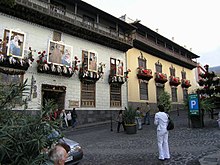This article has multiple issues. Please help improve it or discuss these issues on the talk page . (Learn how and when to remove these messages)
|

La Casa de los Balcones (Spanish for "the house of the balconies") is a historic house and a museum in La Orotava on the island of Tenerife in the Canary Islands.